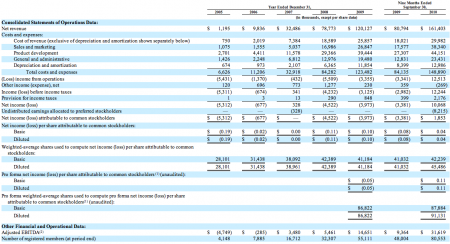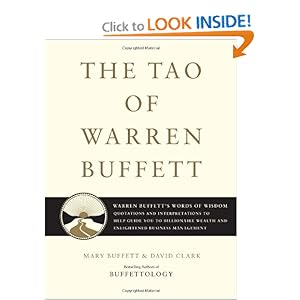57 Meditations on Kicking @$$ in Business and Life"4.8/5 stars" on Amazon
7 Tips To Get Your Site On The Front Page of Google When People Search Your (Common) Name
Tweet 2 CommentsA few months ago I was launching my own personal Web site and I had the simple goal of getting it on Google’s front page when people searched my fairly common name: Rob Kelly.
Well, a search of “Rob Kelly” now places me first on Google’s front page.
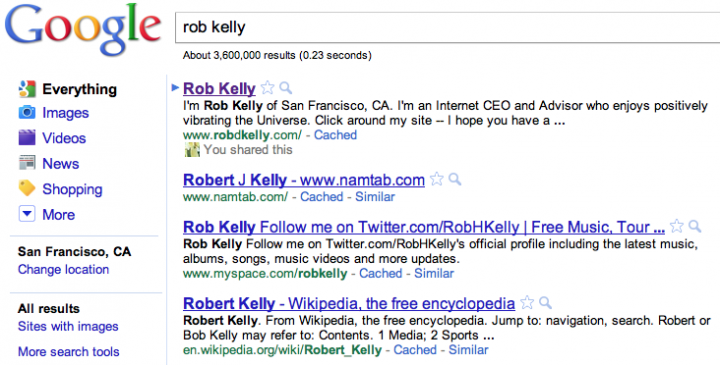
I enjoy sharing learnings from such projects so I decided to deposit some of the knowls that helped get my personal website on Google’s front page right here in this article.
Warning/Alert: If you’re looking for SEO trickery to figure out how to game Google’s search engine, you’ve come to the wrong place! In fact, if that’s you, please leave right now…I don’t want your kind here!
The tips I’m sharing are logical/legitimate approaches to improving your Google website ranking in hopes of getting on the front page of Google in an honest fashion.
Ok, for the rest of you honest folk, let’s do it! …
2 comments so far (is that a lot?) | Continue Reading »
Tuesday, February 22nd, 2011
LinkedIn IPO: Highlights From Their S-1 Filing
Tweet 2 CommentsI’m one of those weird guys who likes to pour through documents like the 182-page LinkedIn S-1 Registration Statement (while flying to Salt Lake City for a trip with high-school buddies!).
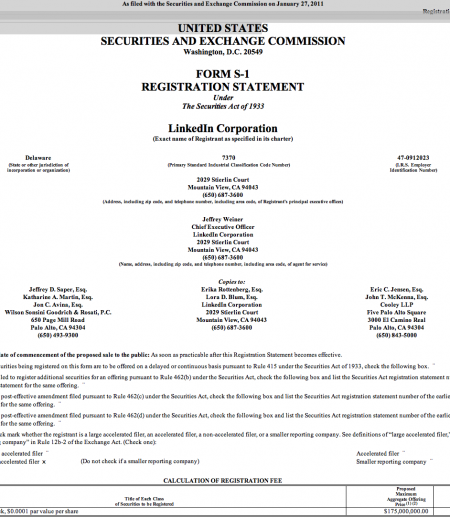
An S-1 is what a company files in preparation for “going public.”
Here are some highlights:
Estimated LinkedIn Revenue & Profits in Calendar 2010
- Revenue: $215 million
- Net Income: $13.4 million*
This excludes what looks like an $8.2 million payout to preferred shareholders
LinkedIn Revenue Growth*
- 2009 to 2010: 99.7% (impressive that they doubled in the last year)
- 2008 to 2009: 53%
- 2007 to 2008: 142%
* 2009 to 2010 reflects just 9 month periods.
LinkedIn Revenue Breakdown By Product Line*
Hiring Solutions: 44% — Recruiters (3,900 of them in 2010) pay LinkedIn to access and market to its database of users. This includes 69% of the Fortune 100.
Advertising: 31% — Marketers (33,000 in 2010) run ads on LinkedIn’s page views.
Subscriptions: 25% — LinkedIn members can use much of LinkedIn for free but there are additional things that users must pay for (such as seeing more than 100 results at a time or being able to filter your searches by seniority of a LinkedIn member).
*Breakdown as of quarter ended Sept. 30, 2010
“LinkedIn is not as automated a business as some may think…over half their revenue comes from Field Sales.”
LinkedIn Revenue By Sales Channel
- Field Sales: 54%
- Online Sales: 46%
Due in part to LinkedIn’s money spent on a sales team in the field, their profit margins are lower than Google’s and Facebook’s.
“I bet that Groupon’s profit margins will be closer to LinkedIn’s than they are to Google or Facbeook when Groupon files its S-1…due to the large field sales team they employ. “
Did anyone notice that I just quoted myself? I’m just trying to break up the text components here!
LinkedIn’s Profit Margins*
- Gross Margin: 81.4%
- Adjusted EBIDTA: 19.6%
- Operating Margin: 7.8%
- Profit Margin: 6.2% (this compares to 28%+ for Google and a rumored 25.7% for Facebook)
* For the 9 months ended Sept. 30, 2010
Interesting Stats On The LinkedIn Database*
- 90 Million+ members
- 1 million+ companies listed
- 2 million+ groups
- 25,000 jobs were posted per week (on average) during 2010
*As of December 31, 2010
LinkedIn Traffic Per Quarter (end of 2010)
- 65 million unique visitors
- 5.5 billion page views
LinkedIn’s International Business
- 27% of net revenues come from outside the U.S.
LinkedIn Valuation
LinkedIn is currently being valued at around $2.9 billion according to the latest shares being sold on SharesPost (note: this is not in the S-1 Registration).
A LinkedIn IPO could value the company at a great price than the $2.9 billion based on those recent privately-traded LinkedIn shares.
Of course, the LinkedIn valuation could change big time if we have an Internet bubble burst before they go public.
2 comments so far (is that a lot?) | Continue Reading »
Monday, February 21st, 2011
A Quick Rework (By 37 Signals) Book Review
Tweet CommentI recently finished reading the book Rework by Jason Fried & David Heinemeier Hansson, the founders of the small but powerful 37 Signals company.
Rework and 37 Signals’ last book (Getting Real) are unique in that they give you a birds eye view on operating a small business (37 Signals has just a few employees) whose products (software for design & productivity) are used by millions.
Here’s a sampling of 5 tips I liked from Rework:
1) The Easiest Product To Make Is One That You Want To Use
The main reason here is that you don’t have to worry about focus groups; you know what the products needs or doesn’t need first-hand.
2) What To Work On First In A New Product
“What’s The Hot Dog In Your Hot Dog Stand?”
I love this quote: Fried & Heinemeier Hansson are suggesting that if you were to start a hot dog stand, the first thing you’d want to work on is the…hot dog (as opposed to the napkins or relish).
I’ve found this hot dog stand analogy to be a simple way to help entrepreneurs figure out where to start on new product creation.
3) What Features To Launch A Product With?
Entrepreneurs face “feature-creep” all the time.
Fried & Heinemeier suggest you ask yourself: If you had to launch your product in 2 weeks, what features would you include?
For example, Crate & Barrel didn’t wait to build fancy displays when they launched their first store (they flipped over “crates and barrels” that the merchandise came in and stacked products on top of them.
4) A Great Quote About Usability:
“Cool wears off, useful never does.”
That’s a good quote I like for erring on the side of usability over coolness with product design.
5) Hire Managers Of One
Fried & Hansson recommend you hire people who set their own goals and execute and don’t need a lot of hand-holding.
This is similar to the “Drivers” (DACI Model) most imperative to getting things done.
One measurement of whether someone is a Manager of One/Driver, the 37 Signals founders say, is that if you leave these people alone, they surprise you with how much they get done.
Overall, the Rework book is a simple read for people trying to create a new business or running a small business; it didn’t make the Top 20 Best Business Books Of All Time but it’s not too far off.
No comments yet | Continue Reading »
Saturday, February 19th, 2011
The 20 Best Business Books Of All Time
Tweet 3 CommentsMy brother-in-law Rich recently asked me for my favorite business book. I had a tough time answering because a slew of book titles raced through my mind.
Well, make room on your bookshelf because I dove in and came up with 20 top business books below:
The Best Business Books Of All Time
1) Poor Charlie’s Almanack
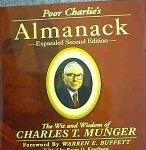
If I had to pick just one business book for folks to read, it would be this illustrated tome by Charlie Munger — Warren Buffett’s long-time right-hand man — with its folksy and entertaining tales of business and life (see Charlie Munger Quotes for a taste).
There’s plenty of Buffett tips in here too so you get two-for-one! …
3 comments so far (is that a lot?) | Continue Reading »
Wednesday, February 16th, 2011
Warren Buffett’s 3 Simple Tips On Who To Hire
Tweet 4 CommentsI’ve been thinking a lot about hiring lately.
I’m working on starting a new business and I also coach others on starting their own businesses – and hiring is perhaps the most important decision a business leader can make (you may recall how I previously wrote about a mishire costing you a cool $1 million).
I like formulas & frameworks and I’ve been keeping my eye out for a good one for hiring — I found a simple one from investor Warren Buffett.
He says there are just 3 criteria that every good hire should have: Integrity, Intelligence and Energy.
1) Integrity
Does this person consistently exhibit a soundness of character? Are they, in a word, honest?
One good tip on figuring this out is to use Warren Buffett’s “newspaper front page” test.
Let’s pretend the potential hire is named Bernard.
If a New York Times reporter had access to the work that Bernard did for you, would you comfortable opening up the paper tomorrow and reading their analysis of Bernard?
If the answer is yes, Bernard is probably of good integrity…if you’re thinking too much about that, you might have a problem with old Bernie.
A favorite quote of mine on honesty/integrity comes from Mark Twain:
“If you tell the truth you don’t have to remember anything.”
Another good quote from unknown sources is:
“Hire for character, don’t hire characters
2) Intelligence
Raw intelligence is important.
Did a person test well in a competitive environment (such as grades in University or on a standardized test like the SATs).
I just met with one engineer today in part because he scored a 1,480 on his SATs and that’s higher than most people I know.
But it doesn’t have to be academic intelligence.
It can be “Street Smarts” – The ability to quickly read situations and people.
Or it could be “Emotional Intelligence” – the skills to create optimal results in your relationship with yourself and others.
3) Energy
By energy, I couldn’t find Buffett’s definition of it but here’s mine:
Good energy in a hire is when they feel motivated about a task at hand.
For example, most people consider me high-energy about most things: I care deeply about new Internet businesses, hiring & making the world a better place – so when I’m working on those things, you’ll find me at a high-energy level.
But there are tasks that you’ll find me much lower energy on, such as paying my bills or filling out a rebate form to get $100 back for my contact lenses.
So, if you need help with your paperwork, please do not consider me a good candidate!
But If They Don’t Have Integrity, The Other Two Will Kill You
Now, ideally you want all three criteria — Integrity, Intelligence and Energy — to be met when hiring employees.
But there is one that trumps them all: Integrity.
Why?
The reason, as Buffett explains, is that if you have the other two: an intelligent person who is high-energy about what they’re doing, but they’re missing the third (they are low-integrity (e.g. dishonest)), then that is a Perfect Storm of financial disaster.
Case in point: Bernie Madoff (you like how I moved to the real -life Bernie from the hypothetical “Bernard”?).
Clearly, Bernie was an intelligent man – he had the respect of a Who’s Who of Wall Street people.
And he was high-energy at what he did– was able to talk 1,000’s of people into hiring him to manage their savings; and hid his fraud for what investigators believe was over 30 years!
He even duped a couple of very smart people I know.
And Bernie served on a number of boards (including Yeshiva University’s Business School and Gift of Life Bone Marrow Foundation) and was clearly a high-energy multi-tasker.
So, I think Bernie qualifes as an intelligent and energized person…but he was low-integrity…and he robbed people blind.
To recap, there are three things that a good hire (or anyone you work with) should possess:
- Integrity
- Intelligence
- Energy
But to save yourself time, make sure they have the first (Integrity) because the next two don’t matter without it.
4 comments so far (is that a lot?) | Continue Reading »
Saturday, February 12th, 2011
The Best Examples of Alliteration in Business, Brands & Other Stuff
Tweet 28 CommentsI was intrigued when I noticed that at least 10 of the The Top 100 Synonymous Genericized Brands I posted included alliteration: brands like PowerPoint, RotoRooter, Google and Armor All.
What is alliteration?

The Most Alliterative Man On Earth? (Jesse Jackson is alliterative in speeches, has alliteration in his name and likes to attend Million Man Marches)
The definition of alliteration is repeating the same sound in two or more words in close succession, such as:
“She sells sea shells by the sea shore.”
Alliteration is widely accepted in the research/scientific community as a tool to enhance memory.^
While alliteration in such toungue-twisters (there are also many in poems and songs) is fun — I’ve been thinking about alliteration in business and brands lately.
So, I’ve compiled a list of examples of alliteration used for commercial purposes (e.g. company names, products, real-life and fictional personalities and even fruit, sayings and other stuff).
Retailers
- American Apparel
- Bed, Bath & Beyond
28 comments so far (is that a lot?) | Continue Reading »
Wednesday, February 9th, 2011
5 Tips On How To Name Your Brand To Be As Dominant As Kleenex
Tweet CommentHow do you create a “Kleenex”-like brand that is synonymous with its product category?
After I crafted The Top 100 Colloquial Brands, I came up with some observations about these brands that might be good tips for you to use to name your brands.
Enjoy!

5 Tips On How To Create A Colloquial/Genericized Brand
1) Use Alliteration
Top brands use alliteration, which is typically defined as using the same sounding first syllable sequentially. Examples of alliteration in the …
